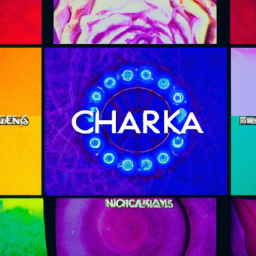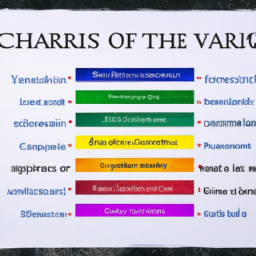The concept of chakras dates back thousands of years to ancient Indian spiritual practices. Chakra, derived from the Sanskrit word meaning “wheel” or “circle”, refers to the energy centers within our bodies. It is believed that these chakras are responsible for our physical, emotional, and spiritual well-being. There are said to be seven major chakras in our body, each with its own unique meaning and purpose.
1. Root Chakra (Muladhara)
The root chakra is located at the base of the spine and is associated with the color red. It represents our foundation, stability, and sense of security. When this chakra is balanced, we feel grounded and safe. However, when it is blocked, we may experience feelings of anxiety, fear, and insecurity.
2. Sacral Chakra (Svadhishthana)
The sacral chakra, located just below the navel, is associated with the color orange. It represents our creativity, passion, and sexual energy. This chakra also governs our emotions and how we express them. When balanced, we feel inspired and in touch with our desires. An imbalance in this chakra can lead to emotional instability and a lack of creativity.
3. Solar Plexus Chakra (Manipura)
The solar plexus chakra is located above the navel, in the stomach area, and is associated with the color yellow. It is associated with our sense of self-worth, confidence, and personal power. When this chakra is balanced, we feel a sense of purpose and inner strength. However, an imbalance can result in low self-esteem and feelings of worthlessness.
4. Heart Chakra (Anahata)
The heart chakra is located in the center of the chest and is associated with the color green. It represents love, compassion, and forgiveness. When this chakra is balanced, we are able to give and receive love freely and have healthy relationships. Imbalances in the heart chakra can lead to feelings of isolation and an inability to connect with others.
5. Throat Chakra (Vishuddha)
The throat chakra is located in the throat area and is associated with the color blue. It represents our ability to communicate, express ourselves, and speak our truth. When this chakra is balanced, we are able to express ourselves clearly and confidently. An imbalance in this chakra can result in difficulty in communication and a fear of speaking up.
6. Third Eye Chakra (Ajna)
The third eye chakra is located between the eyebrows and is associated with the color indigo. It represents our intuition, imagination, and inner wisdom. When this chakra is balanced, we have a clear understanding of our purpose and are able to trust our instincts. An imbalance in this chakra can lead to feelings of confusion and an inability to make decisions.
7. Crown Chakra (Sahasrara)
The crown chakra is located at the top of the head and is associated with the color violet or white. It represents our connection to something greater than ourselves, whether it be the universe, a divine power, or our higher selves. When this chakra is in balance, we experience a sense of spiritual enlightenment and a deep understanding of the world around us. An imbalance in this chakra can lead to feelings of disconnection and spiritual emptiness.
The seven chakras work together to maintain our physical, emotional, and spiritual balance. When one or more of these chakras is blocked or imbalanced, it can have a negative impact on our overall well-being. Recognizing and understanding the meanings of these chakras can help us identify areas in our lives that may need attention and work towards achieving balance and harmony within ourselves.












This is such an interesting topic; I’d love to learn more about it!
KrisRowan:
I’m curious to read this article and learn more too!
GeorgeWashington:
I think I’ve heard of chakras before but can’t remember all the details – can’t wait to read this!
#GreatArticle!
This looks like a fascinating post! Looking forward to learning about the 7 chakras.